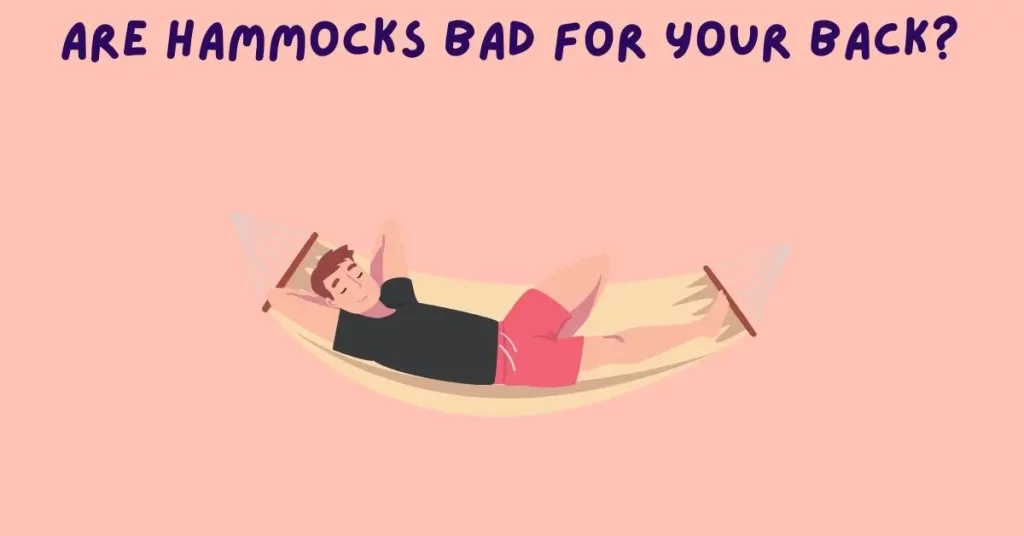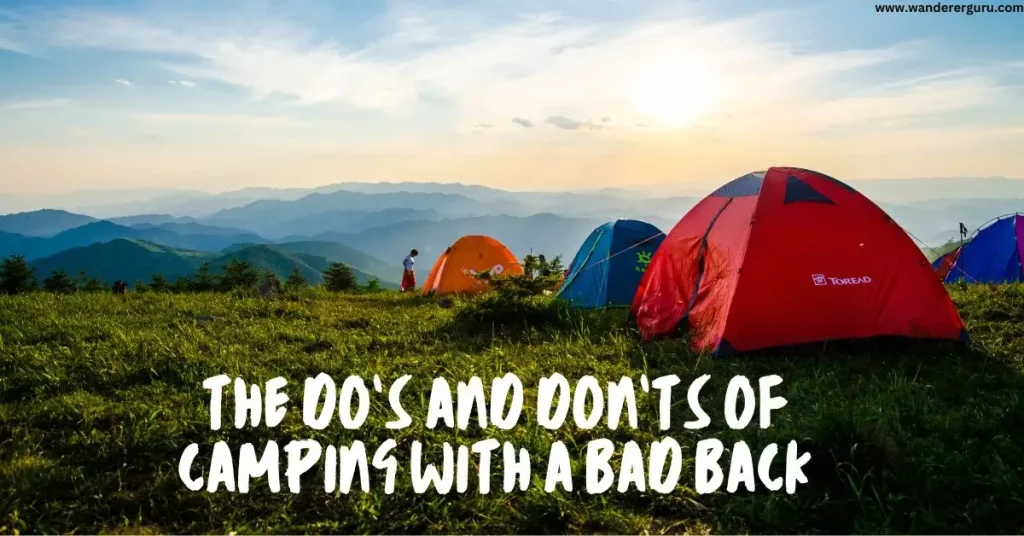Camping with a bad back is only a good choice for some. Because it can lead to different back or joint injuries, making you suffer. It’s essential to plan your trip correctly with precautions so you can avoid excessive injuries and enjoy your camping adventure. With back pain, you can’t even easily carry your camping backpack and can face numerous troubles.
But in this article, we will provide you with valuable insights, tips, and recommendations for camping with a bad back. From choosing the right camping gear to relieving back pain during your camping trip, we’ve got you covered.
How to Camp with a Bad Back?
Camping with a bad back requires careful planning and consideration. Here are some essential tips to make your camping experience more comfortable:
- Choose a suitable campsite: Look for a level-ground camp to minimize uneven surfaces that can strain your back. Avoid rocky or hilly terrain that may exacerbate your condition.
- Invest in a supportive sleeping surface: A good camping mattress or sleeping pad is crucial for individuals with back pain. Look for options specifically designed to provide support and cushioning for bad backs.
- Set up your campsite thoughtfully: Consider ergonomics when setting up your camping equipment. Ensure your tent can quickly enter and exit without stooping or bending excessively.
- Use proper lifting techniques: Remember to lift heavy camping gear with your legs, not your back. Engage your core muscles and avoid twisting motions to prevent back strain.
- Practice gentle stretching exercises: Incorporate stretching exercises into your camping routine to strengthen your muscles and improve flexibility. Focus on stretching your back, hips, and legs to relieve tension and decrease the risk of pain.
- Take breaks and listen to your body: Pace yourself during activities and take regular intervals to rest and stretch. Listen to your body’s signals and avoid overexertion, as pushing yourself too hard can worsen your back pain.
- Pack light and use proper backpacking techniques: If backpacking is part of your camping adventure, pack light and distribute the weight evenly. Use a backpack with adjustable straps and a padded waist belt to minimize strain on your back.
Bonus:
BEST CAMPING TENT FOR THE MONEY
How to Relieve Back Pain from a Backpack?
Carrying a heavy backpack can strain your back, leading to pain and discomfort. Here are some tips to alleviate back pain caused by bags:
- Pack light: Minimize the weight of your backpack by only bringing essential items. Consider the duration of your trip and pack accordingly.
- Distribute the weight evenly: Place heavier items closer to your back and sort the importance evenly on both sides of the pack. This helps maintain balance and reduces strain on your back.
- Adjust the straps: Ensure your backpack fits appropriately by adjusting the shoulder straps and hip belt. The bag should rest snugly against your back and not sag or pull you backward.
- Use a waist strap: Engage the waist strap to transfer some weight from your shoulders to your hips. This helps distribute the load and relieves pressure on your back.
- Take frequent breaks: Give your back a break by setting down your backpack and resting regularly. Use this time to stretch and relieve any tension or stiffness.
- Use supportive backpacks: Invest in a bag with proper support and padding for your back. Look for models that have adjustable suspension systems and ergonomic features.
Are Hammocks Bad for Your Back?

Hammocks are a beloved camping accessory, but are they suitable for individuals with a bad back? The answer depends on personal preference and the individual’s specific condition. Here are some points to consider:
- Proper positioning: Hammocks that promote a diagonal position can provide a more ergonomic and comfortable experience for individuals with back pain.
- Suspension system: Look for hammocks with adjustable suspension systems that allow you to find the ideal amount of sag and support for your back.
- Additional support: If needed, consider using additional support, such as an inflatable camping pillow or a lumbar roll, to provide extra cushioning and maintain a neutral spine position.
- Trial and error: Each person’s back condition is unique, so you must experiment with different hammocks and setups to find what works best for you.
Is an Air Mattress Bad for Your Back?
Air mattresses can be a convenient sleeping option for camping, but they may only sometimes be suitable for individuals with good backs. Here are some factors to consider:
- Lack of support: Air mattresses provide less support than foam or coil mattresses. This can lead to incorrect spinal alignment and potential back pain.
- Adjustability: Some air mattresses allow you to adjust the firmness to suit your preference and provide better support for your back. However, not all air mattresses offer this feature.
- Thickness and quality: Opt for air mattresses at least 8 to 10 inches thick, as thinner mattresses may not provide adequate support for individuals with bad backs. Choose a high-quality air mattress that is less likely to develop leaks or lose air overnight.
- Supplement with extra padding: If you prefer using an air mattress, consider adding extra padding or a mattress topper to enhance comfort and provide additional support for your back.
Bonus:
Can you use Tea For Back Pain?
When camping with a bad back, tea can relieve back pain. Herbal teas like chamomile, ginger, and peppermint have anti-inflammatory properties that can soothe discomfort. Sip warm tea throughout the day to relax tense muscles and promote well-being amidst the great outdoors. For more ideas, visit my Pinterest.
Conclusion
Camping with a bad back is possible with proper planning and the right equipment. Following the tips and recommendations outlined in this article, you can enjoy the great outdoors while minimizing back pain and discomfort. Remember to choose a suitable campsite, invest in supportive gear such as camping cots and mattresses, practice proper lifting techniques, and listen to your body’s needs. With these strategies, you can have a fulfilling camping experience while caring for your back.
FAQs
Q.1 Is golf bad for your back?
Ans: Golf can be challenging on your back due to the repetitive swinging motion and potential strain on the spine.
Q.2 What is the most comfortable way to sleep with back pain?
Ans: Sleeping on your back with a pillow under your knees or on your side with a pillow between your legs can provide comfort for back pain.
Q.3 What is the fastest way to relieve back pain at home?
Ans: The fastest way to relieve back pain at home is to apply ice or heat packs, take over-the-counter pain medication, and rest.
Q.4 How long can back pain take to heal?
Ans: The time required for back pain to heal can vary based on the severity and underlying cause. Back pain can generally improve within a few days to a few weeks with proper self-care, but some cases may require several months for a full recovery.
Q.5 Does milk help back pain?
Ans: Although milk is recognized as a beneficial source of calcium and other nutrients essential for maintaining healthy bones, there is currently no direct evidence to support the claim that consuming milk can alleviate back pain. However, maintaining a balanced diet with adequate nutrients, including calcium, can contribute to overall bone and muscle health, which may indirectly support a healthy back. It’s always best to consult a healthcare professional for personalized advice on managing back pain.
Bonus:

